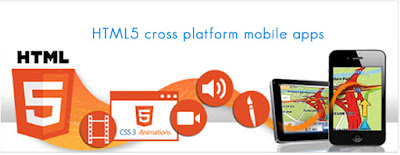The mother of the COBOL programming language, Rear Admiral Grace Murray Hopper Brewster easily torpedoed the words "we've always done it this way" citing this expression as a most damaging phrase in any language. As for the ways in which we, in fact, communicate, she insisted "we must have a language and a structure that will take care of the descriptions and priorities of data and the operations that we perform."

Mrs. Hopper, a pioneering computer for US Navy throughout the 20th century, won the first Sciences man-of-the-Year Award cameras in 1969, and today you can find his slogan "Dare and Do" placed in the active destroyer guided USS Hopper missiles. Thus, Ms. Hopper demanded more structured, efficient and significant than languages used in the past. And the World Wide Web is in the midst of a changing progress in how languages build Web documents structured for those languages to point and deliver even more precise search engines meanings, optimizing the relevance of search results (operations) that produce (make) every day.
The Semantic Web (once known as the "Ontology Web ') connects the logic language to produce meaning. Engineers use semantic Web technologies such as ontologies reference (eg, Schema.org). Technologists are also standardizing emerging Web-specific ontologies industry, or taxonomies regulatory industry, serving Line of Business (LOB) semantics (ie ontologies specific domain) for newspapers, libraries (eg, LOC MOD), project management, art museums, the biomedicine, biochemistry, genetics, life sciences, IT services, the insurance industry (in tandem with ACORD), car manufacturers and car dealers, a complete semantics of business standards Vocabulary and Business Rules (SBVR), standard eXtensible Business Reporting Language (XBRL), the travel industry, and through ontologies financial institutions, within that industry. We seem to have some very far from keyword stuffing on the websites, now we are applying syndetic (free) syntax to semantics (the diagram to indicate 'meaning') structures, and an exhaustive depth understanding of semantic ontologies was updated last September within the object (OMG) Ontology Definition Metamodel Management Group (MDGs) - with XML Metadata Interchange (XMI) files included.
The first financial services structured data markup
For the financial services industry many experts semantic web site Factiva Dow Jones Corporation (initially called, 'Dow Jones Reuters Interactive Business') as the first large-scale project that deployed industry-specific structured data (taxonomies and ontologies) to finance specific domain publications. Today, after multiple iterations and acquisitions in the industry, Factiva and LexisNexis News Corporation are the leading high-end publishing aggregate financial news and global business. However, a general rule markup of financial products and services industry initiative began just a month after the release indigomultimedia.com: FpML (Financial products Markup Language) proposed by JP Morgan and PricewaterhouseCoopers (PwC) in June 1999. IBM SWIFT and other organizations joined this effort, an initiative focused on marking OTC derivatives markets (over-the-counter derivatives are traded between two parties, not through financial exchanges or intermediaries). FpML is supervised by the International Swaps and Derivatives Association (ISDA). The standard FIX protocol, initiated in 1992 for trading financial services institutions, is now overseen by the FIX trading community, network architecture Banking Industry (BIAN), founded in 2008, continues to work with the OMG and The Open Group to develop financial services interoperability frameworks.
Building Eccles Federal Reserve in Washington, DCBut the banks as the institutions themselves - How could more effectively:
a) communicate more efficiently with other banks (eg, buy and sell credits to others);
b) Provide transactional transparency for regulators (eg meet
US Treasury and the Federal Reserve regulations), and, most importantly;
c) Speak more accurately and transparently with savings and loans to consumers?
Financial Services: Outline and FIBO
Well, in 2012 we welcomed FIBO, the Financial Industry Business Ontology ™, a EDMC and OMG organized conference Demystifying Financial Services Semantics (subtitled: The business value of data and semantics), during which we presented " Ontology Financial Industry Business "(by Mike Bennett, Director and Founder, Hypercube, Head of semantics and, EMCDDA standards), followed by" Financial Industry Business Ontology Operations "(a discussion led by David Newman, Executive Vice President of Enterprise Technology Architecture & Planning, Wells Fargo). FIBO is supervised by the Finance Working Group OMG domain (FDTF); Updates FIBO OMG EDMC found in this Wiki GMOs; and adaptation, based in Orange County, CA, provides a visual model concepts kindly FIBO. Here is Dennis Wisnosky, former architect CTO and director of the Office of the Department of Defense United States of Secretary of Defense (OSD), a concise introduction of bank executives and semantic ontologies vocabulary FIBO (ie financial instruments of financial institutions in the semantic world) in February 2014. It was in February 2013 that Dennis Wisnosky was appointed to lead the process of implementing business rules for (EMCDDA) Financial Industry Business Ontology (FIBO) Council Enterprise Data Management.
Financial services: Ontology FIBO
Company Thematix semantic technologies consultancyIn considering the depth of the FIBO orchestration, standardization and the importance of FIBO for the financial industry, Calibre urged Elisa Kendall, director Thematix Partners, a Management Group (OMG) member of the board of architecture objects, and key business Industry Financial Ontology (FIBO) partner. [Note presentation by Ms. Kendall, "Ontology Engineering UML".]
Question: "What is the impact of FIBO for the financial industry to date?"
Answer: "FIBO has been the occasion for a wide range of experts in the field of industry [SMEs] to intervene in the vocabulary they use from day to day This is perhaps the first time that the industry as a whole has joined under standardized conditions of art. What makes this different lexicon of any other is that is represented as an ontology, which allows not only clear and unambiguous communication between human beings, but also reasoning and team standings. This capability could possibly prevent the next crisis. "
Financial Services: FIBO and SEO
what are the ramifications of SEO connected to the arrival of FIBO? Emerging Caliber SEO is based on the schema and schema (along with other methods of applying structured data vocabularies web documents such as RDFa and JSON-LD) is derived from specific lexical industry. As a mature FIBO to standardize the structures within terminologies their vocabularies' are going to these frameworks still yield more useful in the Semantic Web - the Web Ontology - providing more accurate results (ie, "findability") for financial institutions that have implemented this explicit, specific and rigorous to the respective financial services and financial instruments marked. The beneficiaries are the commercial banks, brokerage firms, credit unions, investment banks, insurance companies, currency exchange houses, and offers other financial services institutions.
- Side-note | Addendum
- Federal agencies that are (or will be) involved in the evolution of FIBO:
- Consumer Financial Protection Bureau (CFPB)
- Commodity Futures Trading Commission (CFTC)
- Federal Deposit Insurance Corporation (FDIC)
- Federal Finance Agency Housing (FHFA)
- Federal Reserve Board (FRB)
- Supervisory Board Financial Stability (FSOC)
- Government Accountability Office (GAO)
- Municipal Securities Rulemaking Board (MSRB)
- Administration National Council of Credit Unions (NCUAB)
- Office of the Comptroller of the Currency (OCC)
- Office of Financial Research (OFR)
- US Securities and Exchange Commission (SEC)
- US Treasury
Gee, well integrated, Chris? This is a kind of reference guide OMG FIBO Ontology schema. Your share considering Hopper confused me at first, but then quickly got the connection efforts of structured COBOL with the efforts of the structure / ontology by EDMC for FIBO, outline data, and then the SEO section. Oh, and I did not realize the size of an individual EDMC .
Jan Cabrillo February 27, 2015 at 9:14 a.m.
OK, caliber, I understand, at least I think. The Semantic Web is not a casual effort, as the conversations that speak most often are, and is instead some / integration of 'very' (methodically) structured / elements in order to make sense of the raft of items data and published (and it'll be published on the web today, tomorrow, and so on). Thus, from the work of people of GMOs and EMCDDA, along with banks and regulatory agencies, cashier language will emerge that will "bring transparency" both between the fin. svcs. Entities and between banks and the SEC, etc. Then, this structure will be mixed into off in Schema.org, Freebase (mean, since I've posted elsewhere, to Wikidata.org), then all that banks and brokerages and insurance companies will offer more "transparent" detectable by using public search engines. Straight? I mean, think it's the long version of a TL; DR.
Calibre Media Group February 27, 2015 at 9:24 am
Jan, you just edit the spelling on chance, that's all, and that response is an exact TL; DR to what we're getting in connection with FIBO, outline and SEO. Thanks tons, and hope that spring comes early to New Jersey!

















